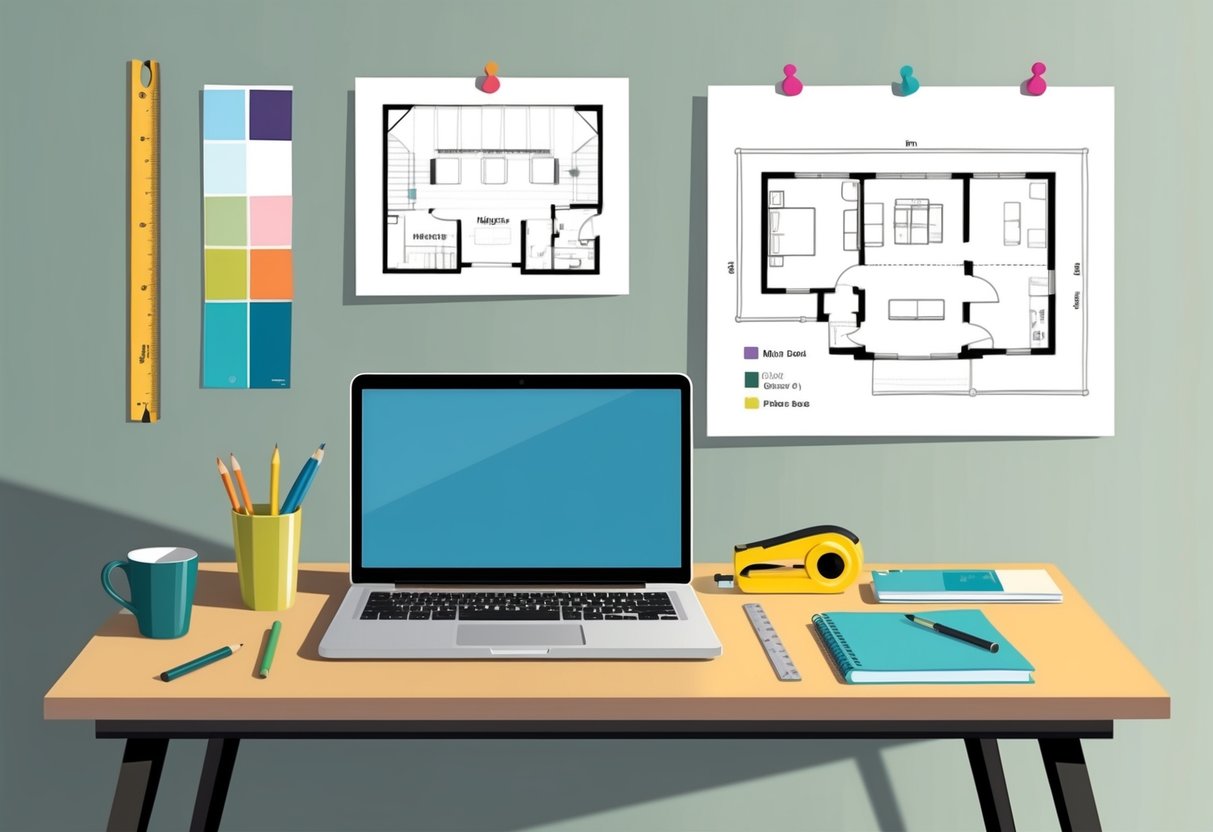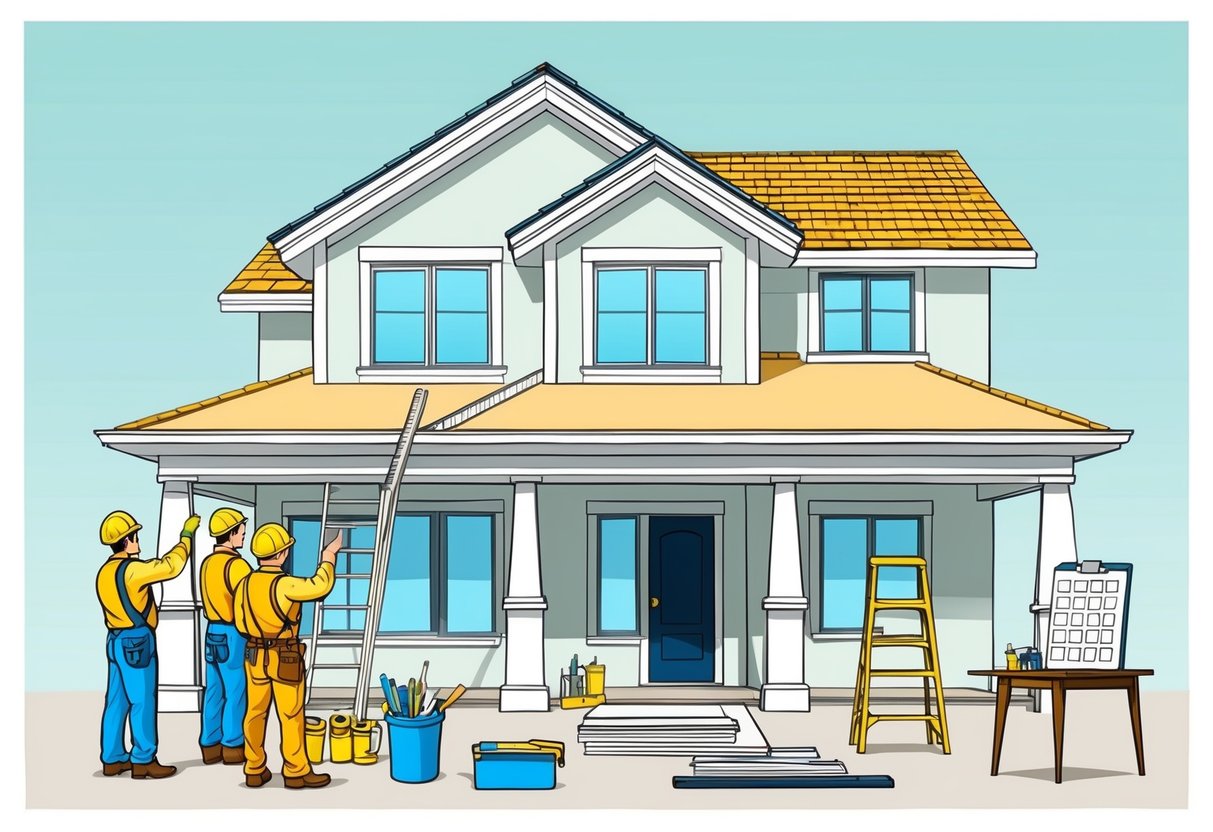
Ensuring Quality Work and Final Inspections

Quality work during home improvement is critical for satisfaction, safety, and durability. Clear assessment steps and finishing tasks help homeowners confirm the job meets agreed standards.
Conducting Walkthroughs
Walkthroughs are a vital part of the final quality check in any remodeling project. The homeowner and contractor should visually inspect all completed work, looking for issues such as paint flaws, misaligned tiles, faulty hardware, or incomplete installations.
It is important to use a checklist that covers all rooms, finishes, and project specifics for a comprehensive review. Attention to detail matters.
During walkthroughs, check doors, windows, and fixtures to ensure they open and close smoothly. Electrical outlets, switches, and plumbing should function without defects.
Homeowners can refer to guides on inspection and quality assurance steps to make sure major and minor issues are addressed before final sign-off.
Addressing Punch List Items
After the walkthrough, a punch list is generated to document any items that need corrections before the project is officially finished. This list typically includes minor repairs, touch-ups, or any incomplete tasks.
Clear communication between the homeowner and contractor helps avoid delays and ensures every issue is resolved. Punch list management requires organization and follow-up.
Track each item, set deadlines, and verify every correction is completed to the homeowner’s standards. For further guidance, consider reviewing a home renovation checklist for similar project completion processes.
Frequently Asked Questions

Remodeling a home can be an overwhelming process if it’s not approached with careful planning, clear budgeting, and an understanding of each project stage. Accurate information on contractor selection, timeline management, and common mistakes helps homeowners avoid frustration and ensure a successful final result.
How do I start the planning process for a home remodeling project?
Begin with identifying your goals for the renovation. Clearly define what needs to be improved, set priorities, and decide where compromise is possible.
Assess which rooms or elements require attention and list specific changes desired. Next, determine how these goals align with available resources.
Effective planning includes researching design ideas, creating a detailed list of required materials, and obtaining any necessary permits. More information on goal-setting is available in this step-by-step remodeling guide.
What budget should I consider for a complete home renovation?
A full home renovation can vary significantly in cost based on square footage, materials, and current market rates. In general, the average price for remodeling several rooms is around $52,000.
Homeowners should allocate funds for both expected costs and a 10% to 20% contingency for unforeseen expenses. It is important to itemize expenditures for labor, building materials, permits, and design fees.
Setting a realistic budget before starting helps minimize financial stress and ensures that the project remains on track. Guidance on formulating a renovation budget can be found in this home renovation planning guide.
Can you break down the various phases of a home remodel?
Home remodeling typically follows a sequence of steps, beginning with initial planning and design. After defining goals and finalizing a budget, the next phase involves hiring contractors and securing permits.
Demolition and structural work come next, followed by major installations like plumbing, electrical, and HVAC. Once infrastructure is in place, interior finishes such as flooring, cabinetry, and painting are addressed.
The final phase is review and inspection to ensure the space meets both functional requirements and code standards. An organized approach to these phases reduces disruption and increases project efficiency.
What are the key considerations when selecting a contractor?
Selecting the right general contractor requires verifying licenses, insurance, and relevant certifications. Checking references and previous project portfolios helps evaluate quality and reliability.
Homeowners should obtain written estimates, review detailed contracts, and confirm clear communication protocols with the contractor. Other important factors include understanding payment terms, establishing a consistent project schedule, and ensuring the contractor has experience with projects similar in scope and style.
Carefully vetting options can prevent misunderstandings and delays.
How do I manage my renovation timeline effectively?
A realistic and well-structured timeline depends on outlining each project stage and scheduling work in logical order. Homeowners should account for lead times on materials, contractor availability, and seasonal effects.
Regular project check-ins help identify potential delays early and ensure progress remains steady. Flexibility is important, but major project milestones should be documented and tracked using a calendar or project management tool.
Detailed planning allows homeowners to make informed adjustments as unexpected issues occur. A clear timeline also supports better coordination among contractors and suppliers.
What are some common pitfalls to avoid during a home remodel?
Underestimating costs, neglecting to get necessary permits, and skipping written agreements are frequent remodeling mistakes. Homeowners sometimes waver in decision-making or make significant changes mid-project, causing delays and unplanned expenses.
Insufficient communication with contractors and unrealistic expectations about timelines also lead to unnecessary complications. Detailed checklists, like those found in this comprehensive remodeling checklist, help keep projects on track.